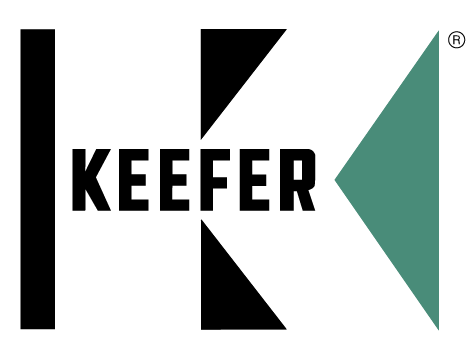“If I Could Turn Back Time . . .”
– Cher
“Strike That, Reverse it.”
A product manufacturer engaged us to assist with a prospective acquisition. During the initial interview, the CEO advised that her company was in the process of negotiating several significant global business opportunities and realized that a major infusion of capital was needed in order to accommodate these opportunities.
The CEO made it clear from the onset that venture capital was not an option and that an initial public offering would be too costly and time-consuming. I then learned she had been working with a “facilitator” over several weeks to quickly raise capital through a reverse merger.
A little background about reverse mergers . . . they typically involve a situation where an active company merges with a defunct company that simply exists on paper (also known as a “shell company”). However, since these shells have previously gone through all of the necessary steps to trade publicly, they can be attractive to companies seeking to avoid onerous time and cost commitments.
This was the following exchange:
CEO: “Chris, is this something you’d be willing to help us with?”
Me: “Sure, but I’ll need to know a little more about the facilitator and shell.”
CEO: “Okay, but we’re good with them on our end. We really just need you to prepare the merger agreements so we can close on this.”
Me: “Let’s take a step back. What specific due diligence have you done on them?”
CEO: “The facilitator is a long-time friend and neighbor of mine. He said the shell is a perfect fit for our business and this should really be a simple deal. I trust him.”
Me: “So you haven’t done any due diligence of your own?”
CEO: “Not really.”
I then explained to the CEO that there were reasons why shell companies were defunct, so conducting extensive diligence on them was important (regardless of who the facilitator was). Even worse, some shells have been used in the past to defraud federal regulators, making them an even more troubling vehicle for raising capital.
After some back and forth, she ultimately agreed it would be best to uncover any potential red flags before taking the next steps, despite this causing a delay in closing. The last thing she wanted was a knock on the door from federal investigators after completing the merger.
“Houston, We Have a Problem”
We first provided a robust checklist of requested documents to the owner of the target shell, including all business and tax records. We also researched public filing and litigation histories involving the owner and facilitator.
Through this initial process, we learned that the shell had originally begun as a publicly-traded arts and crafts business. After going out of business, it held itself out to the public as a shell company. That shell was then acquired by the owner in our case via another reverse merger, which he held out to the public as an energy exporter. This is where it got interesting.
Despite having removed the “shell” designation from its public filings, this exporting company had prepared no financial statements and listed no revenues in any of the years during which it operated. However, it had the same amount of nominal costs each year—$2,500 in “professional” fees—all of which were paid to the owner. The owner also appeared to have interests in several other shell companies claimed to be based out of Nevada and Utah involving mining and energy activities, none of which had any real operations. Each of these things constituted red flags from our perspective. Taken together, we saw a potentially catastrophic concern for our client.
In an effort to get some clarification, we held a conference call with the owner of the shell and facilitator. The owner persisted in his claim that the alleged exporting company had operated for several years, but was curiously unable to explain away the lack of revenues and “professional fees” paid to himself. When we asked about the other shell companies, he sheepishly admitted his involvement, noting over 20 shell-related deals with the facilitator. The facilitator acknowledged the existence of this prior relationship, much to the surprise of the CEO.
After a few more follow-up questions (with less than satisfactory responses from the owner and facilitator), I asked what percentage of the outstanding shares were sold after the company began holding itself out as an exporting business. The concern, of course, was that the owner had been fraudulently raising capital by selling shares to a business that was not operating. The owner was adamant the number was zero. Fortunately, I had previously received a shareholder list reflecting the number to be closer to 98%. I relayed this fact and attempted to probe further into how these funds were raised and ultimately used by the company, since that information wasn’t in any of the documents they provided. The owner suddenly dropped off the call never to be heard from again. The facilitator quickly followed suit.
The frustrated CEO ultimately conceded the significant legal and business risks uncovered during the due diligence process warranted walking away from this shell, as well as the overall strategy of raising capital through a reverse merger. Although she was discouraged to be back at square one, she was glad to have avoided exposing her business to civil and criminal sanctions.
“Sometimes in Life, Random Things Can Blindside You”
Due diligence is necessary when entering into major acquisitions, whether business, real estate, equipment or otherwise. Sometimes things progress so quickly that important items are missed or overlooked. It is critical that businesses take a step back and be proactive during these transactions to determine potential exposure to avoidable risks.
When starting the due diligence process, it is wise to have a checklist of information and documents to request from the other side. For example, if your business is acquiring or merging with another business, you should be reviewing and analyzing things like the target’s business records, financials, agreements, insurance policies, compliance policies, intellectual property, licenses/permits, leases, assets, liabilities, claims and litigation (among other things). If you are acquiring real estate, you need to understand potential risks such as title, zoning and environmental concerns, as well as any maintenance or structural issues that could run with the property.
There will be many sub-parts to each of the above subjects, with specific information and documents follow-up requests depending on the type and complexity of the transaction. As responsive information and documents start rolling in, you can decide whether you have enough information to satisfy concerns related to a specific subject. Or, should red flags emerge like the ones discussed above, you can request supplemental information and documents to aid in chasing rabbits down holes until you get the answer you need.
Preventive Lawyers are skilled at working with your team to identify issues in various due diligence settings. If a project is red-lighted, they can collaborate with your team to develop alternate business strategies. And if a project is green-lighted, they can assist your team in negotiating and developing the necessary agreements to take the transaction through closing.
KEEFER is your ounce of prevention.





















